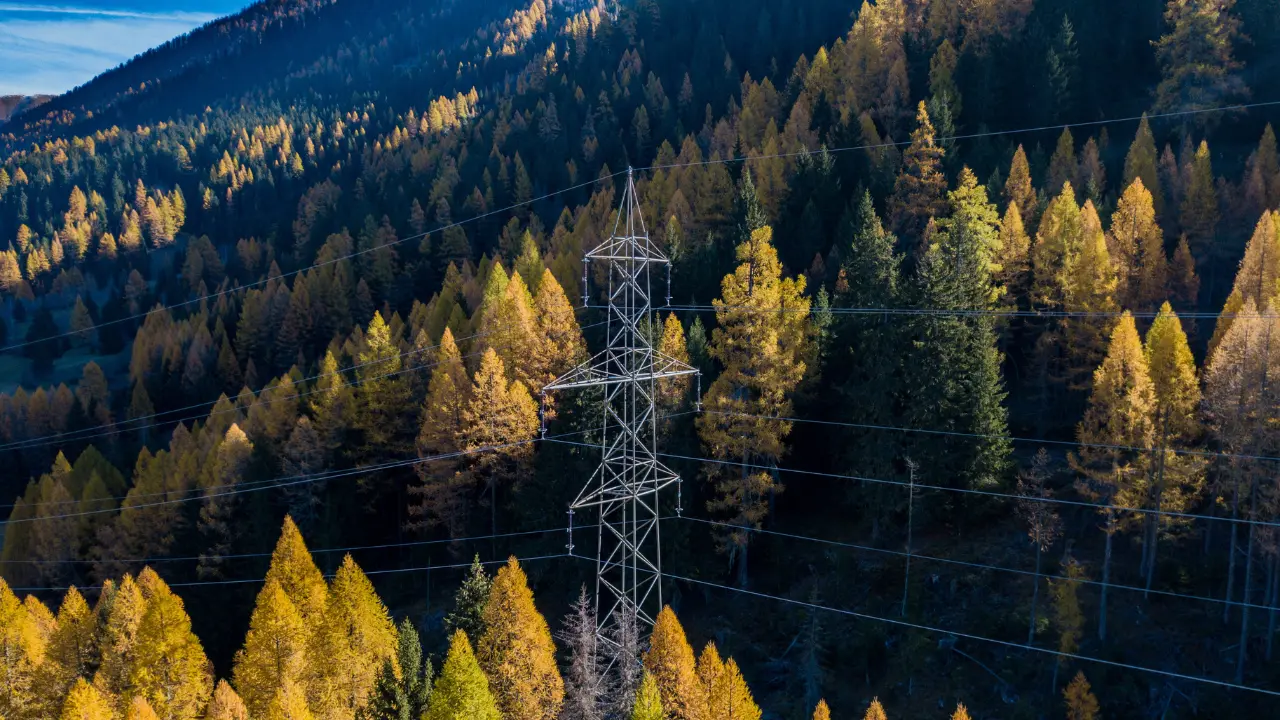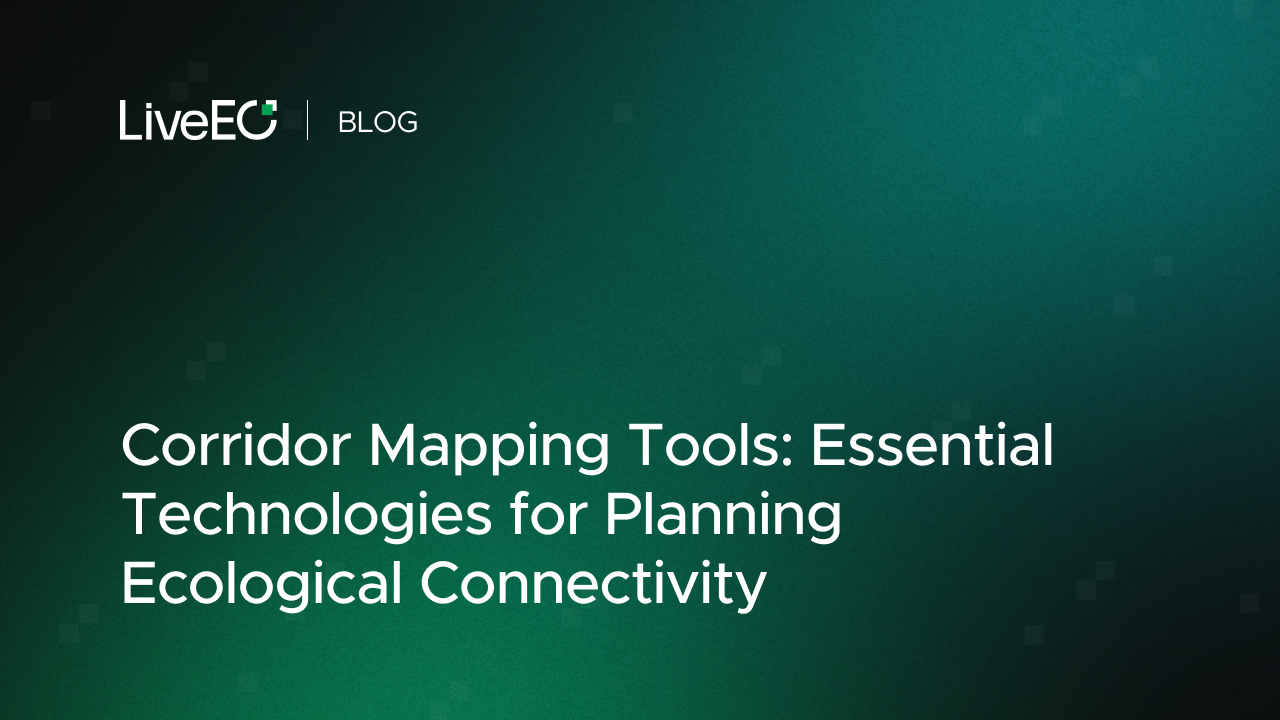
In a rapidly changing world where habitat loss and climate change threaten global biodiversity, ecological corridors emerge as a powerful solution to reconnect fragmented landscapes and restore thriving ecosystems.
Connectivity conservation initiatives are crucial in creating these corridors, facilitating movement between protected areas, and addressing the challenges posed by habitat fragmentation.
By intelligently designing these low-maintenance pathways with native vegetation, forest edges, and “stepping stones,” we can create vital lifelines for endangered species, offering food, shelter, and safe migration routes.
From enhancing wildlife habitats and supporting species adaptation to mitigating forest fire risks and promoting sustainability, ecological corridors—particularly those aligned with powerline infrastructure—bridge the gap between development and conservation.
This guide explores how careful planning, ecological corridor management (ECM), and nature-centric principles can transform overlooked spaces into dynamic, biodiversity-rich ecosystems.
Key Takeaways
- Ecological corridors promote biodiversity by providing habitats for endangered species, facilitating species migration, and enabling natural food chains to thrive within the corridor. These corridors are designed with specific conservation objectives in mind, ensuring that their width and features support local species diversity by considering habitat preferences, edge effects, and seasonal wildlife activities.
- Well-designed corridors mitigate habitat fragmentation and act as pathways for wildlife adaptation to climate change, supporting species movement and reproduction.
- Native vegetation enhances resilience and biodiversity, while the removal of invasive species is essential to maintain the ecological balance and support native animal species.
- Strategically placed powerline corridors can serve as fire protection zones, as their vegetation helps retain soil moisture and reduces forest fire risks during hot summers.
- Connectivity is critical, and implementing “stepping stones” of vegetation within corridors ensures safe movement for small animals while also supporting maintenance needs.
- The ECM approach aligns sustainability with corporate responsibility, benefiting companies’ ESG reports and improving public perception, though initial costs may present short-term economic challenges.
Introduction to Ecological Corridors
Ecological corridors are essentially low-maintenance areas consisting of a valuable mix of low, long-growing trees and shrubs and open land areas.
In the best case, this corridor vegetation consists of native tree and plant species in the most species-rich composition possible, as well as smaller deadwood stands and is created through intelligent and selective maintenance measures over several years.
Different vegetation and landscape forms, such as forest edge structures with their bayous low-growing design, herbaceous and shrub layers alternating with open land areas with flowering meadows, create ideal living conditions for animal species threatened with extinction (insects, beetles, small mammals, bird species).
The population of animals is directly dependent on the food supply, and such biotopes can be “reanimated” through ECM, so that animal species that were once displaced can resettle in these corridors within a few years.
In addition, stable, stepped forest edges create an excellent protective shield for the adjacent high forest, as they have a statically better developed root system.
The devastating effects of tree falls caused by hurricane-force storms - caused by climate change - can thus easily be counteracted. Another advantage of low deciduous and mixed forest cultures and partial hedge structures is the resulting increase in the degree of shade in the corridor.
More shade in hot summers protects the soil from intense sunlight, so it stays significantly moister during the day, which can significantly reduce the risk of forest fires on hot days.
Due to their vegetation, powerline corridors maintained according to ECM standards already function as officially declared fire protection corridors in many regions, which makes them highly attractive for many authorities.
Highlight the role of well-designed corridors in mitigating habitat fragmentation and enabling species adaptation to climate change.
The linear course of the power lines in all directions represents a safe and food-rich “migration corridor” for many animal species to other habitats, which must also be visited for reproduction, among other things.
Red deer and wild boar and many small mammals are proven to like these routes, but so are predators that hunt their prey there. In some areas, a large number of insect species (wild bees, butterflies) and beetles in deadwood populations are spreading again - following the food supply - which in turn are also prey for birds and bats, which are one step higher in the food chain. The natural principle of “eat and be eaten” prevails.
By cleverly creating protection and cover options, e.g. by using distributed hedge structures as “stepping stones”, it is possible to create a balanced relationship between prey and predator. Scientific studies show a significant increase in plant and resulting animal species within the power lines compared to the neighboring forest and agricultural areas.
Ultimately, the corridors are a vital habitat for all animal species prevalent there.
What are Ecological Corridors and Why are They Important?
Ecological corridors are designated areas that connect fragmented habitats, allowing species to move freely and maintain essential ecological processes.
These corridors are crucial for biodiversity conservation as they enable the exchange of genetic material, facilitate migration, and provide habitat for a wide range of species.
By maintaining ecological connectivity, corridors help preserve ecosystem services such as pollination, pest control, and nutrient cycling, which are vital for human well-being and the development of sustainable cities.
In essence, ecological corridors act as lifelines for wildlife, ensuring that ecosystems remain robust and resilient in the face of environmental changes.
Benefits of Ecological Corridors
Ecological corridors offer numerous benefits for both wildlife and human populations. By providing connectivity between habitat patches, these corridors enable species to adapt to climate change, maintain genetic diversity, and access suitable habitats.
This connectivity is essential for the survival of many species, particularly those with specific habitat preferences.
Additionally, ecological corridors support ecosystem services such as water filtration, soil conservation, and carbon sequestration, which are crucial for human health and economic development.
Beyond their ecological functions, corridors can also serve as green spaces, offering recreational areas for humans and promoting urban biodiversity. These green spaces enhance the quality of life in urban environments, making cities more livable and sustainable.
Types of Ecological Corridors
There are several types of ecological corridors, each serving unique functions and benefits:
- Habitat Corridors: These corridors connect fragmented habitats, allowing species to move freely and maintain ecological processes. They are essential for species that require large territories or specific habitat conditions.
- Migration Corridors: These pathways facilitate the seasonal migration of species between breeding and wintering grounds. They are crucial for the survival of migratory species, ensuring they can complete their life cycles.
- Riparian Corridors: Following rivers and streams, these corridors provide habitat for aquatic species and support ecosystem services such as water purification and flood control. They also serve as important wildlife corridors in otherwise fragmented landscapes.
- Urban Corridors: These corridors connect green spaces within cities, promoting urban biodiversity and providing ecosystem services. They help integrate nature into urban environments, offering residents access to natural areas and enhancing the ecological health of cities.
Principles of Designing Ecological Corridors
There are a couple of key principles to consider when designing ecological corridors. First, the corridor should be wide enough to support the movement of species and provide a buffer against edge effects. Second, the corridor should connect habitats that are critical for the survival of the species in question. Third, the corridor should be designed to accommodate the specific needs of the species, such as providing food, water, and shelter. Finally, the corridor should be protected from human activities that could disrupt its function.
Corridor ecology emphasizes the importance of ecological connectivity for wildlife movement and biodiversity conservation.
Ecological Connectivity: Ensure uninterrupted links between habitats
When power lines that cross forests are mapped, the ECM planning office should document the development goals of “biotope networking” and “stepping stones” on these areas as part of broader ecological networks.
To this end, crossbars or island groups of different vegetation should be “cultivated” within the corridor. These “stepping stones” allow small animals to move more safely from one side of the line to the other (e.g. small mammals versus birds of prey).
{{inline}}
However, ECM corridors make a greater contribution to species protection in the longitudinal direction of the line. This is because they are often used as habitats and territories by animals that live on the ground and by animals that hunt in the air. It is also sensible to cleverly create a 4-5 m wide mulch strip, which can be used both as a hiking path for the animals and as a maintenance path for the energy supplier to inspect the route. This “walking and driving path” is used by the assembly teams in the event of a malfunction or duringcable or mast repair work.
In this respect, it serves both parties: security of supply and species and nature conservation (win-win).
Size and Scope: Optimize corridor width and length to support diverse species
As a rule, the widths of the protective strips of power lines crossing forests are dimensioned and documented in such a way that a falling tree from the neighboring forest edge does not fall into the safety area of the line and causes high personal and economic damage.
Depending on the voltage level, topology, predominant vegetation in the final growth, etc., this can be 20 m to 45 m wide on both sides of the line center line. It is important for several reasons to keep the entire, secured protective strip width clear.
On the one hand, to exclude any danger to people from electrical arcing, and to exclude any danger to the line at any time, which can occur when the vegetation approaches the live conductor.
Of course, the width of the corridor (protective strip) also influences the nature and species protection factor. The wider the corridor the more design options it offers between the vegetation types and their growth heights. Stable and very species-rich forest edge structures (e.g. wavy, curved forest edge) can be developed, especially in the side areas of the adjacent forest.
A narrow protective strip within lateral high forest stands allows significantly less scope for shaping the vegetation in terms of type and extent.
The combination of a forest edge that is as diverse as possible (in species and height) and a well-developing forest edge with hedge and shrub layers in the pre-forest stage is the absolute optimum for the preservation and promotion of a wide variety of species-rich flora and the resulting fauna.
Native Vegetation: Use region-specific plants to enhance biodiversity conservation and resilience.
Planting plants as compensation for trees removed in the protection strip or as compensation or replacement measures elsewhere is not advisable and should not be proactively monitored. Instead, valuable and native plants present in the corridor should be preserved and developed in the long term, provided they do not have to be removed or cut back again in the medium term. (ECM principle: promoting slow-growing tree and shrub species and displacing fast-growing trees)
Valuable, native plants that predominate in the area have developed there because they find ideal living conditions there, so they can be said to be more resilient. However, in the medium term, species that are also very resistant but invasive species should be completely eradicated as far as possible through continuous, selective removal. Urban ecosystems can benefit from utilizing technology to manage and synthesize information related to urban vegetation, promoting ecological corridors and urban rewilding.
Invasive plants from other regions, countries or even continents do not provide any real value to native animal species, as they usually do not provide food for them. This is also one reason for the continuous spread of invasive plants; in the end, they dominate the areas and gradually displace the important native plant species.
Minimizing Fragmentation: Avoid barriers like roads and railways; design crossing structures where necessary.
The aim is to arrange power lines as close as possible to other infrastructure (highways, railway lines) and, ideally, parallel to it. Of course, this is not always technically possible, so lines often cross and cut through agricultural and forestry areas. In the past, these lines were often built in forests - hidden, so to speak - so that they did not cause a visual disturbance.
These forest corridors have been an obstacle to wildlife for many years due to their cutting effect because the corridors were poorly maintained due to ignorance.
Thanks to intelligent care in accordance with ECM principles, exactly the opposite occurs. What was once a disadvantage turns into a great advantage for species protection when a variety of food and shelter options and the possibility of habitat networking are created.
At intersections with paths, roads and railway lines, the partial preservation of hedges and bushes should generate privacy barriers, so-called "backdrops", which offer protection to the animals and give them a better feeling of security.
Ideally, these backdrops are laid out parallel, nested and directly on the traffic routes in the overhead power line corridors.
Constructing and Maintaining Ecological Corridors
Constructing and maintaining ecological corridors requires careful planning and management. The process involves several key steps:
- Identifying Focal Species and Their Habitat Preferences: Understanding the needs of target species is crucial for designing effective corridors. This involves studying their habitat requirements, movement patterns, and ecological roles.
- Conducting Habitat Assessments and Mapping: Detailed assessments and mapping of existing habitats help identify areas that need connectivity and potential corridor routes.
- Designing Corridors: Corridors should be designed to meet the needs of target species, considering factors such as width, vegetation types, and connectivity with other habitats.
- Implementing Conservation Measures: This includes habitat restoration, planting native vegetation, and controlling invasive species to ensure the corridor supports a diverse range of species.
- Monitoring and Maintaining Corridors: Regular monitoring and maintenance are essential to ensure the corridors remain effective. This involves tracking species movements, assessing habitat quality, and making necessary adjustments to management practices.
Challenges in Ecological Corridor Design: Managing Invasive Species
For a few years now, society has been developing a growing awareness of sustainability in both its private and professional environment.
In addition, the requirements of the required sustainability reports (ESG or CSRD reports) are promoting this development. If the reports show good signs of improving its resource and environmental management, the company will rise in the rankings, and as a result, an increase in value on the capital market can be expected.
A serious implementation of ECM in the maintenance of high-voltage lines is now widely recognized by auditors and thus serves as an important component in company reports.
ECM Corridors are the calling card of the network operator.
The company that has defined ECM as its standard increases in public perception and its image improves.
In addition to the property owners of the corridors (state, municipalities, private individuals), authorities and NGOs also recognize these positive developments and can therefore proactively officially support the line construction projects that are urgently needed for the energy transition!
However, the financing of the initial additional expenditure is a controversial issue within companies.
In maintenance (OPEX), the introduction of ECM will generate more costs, but the operator's revenue situation will not improve immediately. These additional costs can only be offset in the medium term, which makes it unattractive from a purely economic perspective - viewed in isolation - especially since not only service providers but also the company's own staff must be additionally qualified for this.
If the energy suppliers of all economically strong countries were to commit to the ECM concept, valuable measures could be implemented on more than 1 million hectares of landscapes that would counteract the global extinction of animal and plant species.
Conclusions
Ecological corridors are not just pathways; they are essential tools for restoring and protecting biodiversity, mitigating habitat fragmentation, and fostering climate resilience.
By integrating native vegetation, promoting species connectivity, and aligning infrastructure like powerline corridors with ecological corridor management (ECM) principles, we can turn potential ecological disruptions into thriving habitats.
These carefully designed corridors create a delicate balance of food, shelter, and migration opportunities for endangered species, while also providing critical environmental benefits, such as fire prevention and soil protection.
Though initial costs and maintenance present challenges, the long-term rewards in biodiversity preservation, climate adaptation, and sustainable development are undeniable.
As awareness of ecological solutions grows, embracing ECM practices will not only benefit wildlife but also enhance public perception, corporate sustainability efforts, and the global fight against species extinction.
By prioritizing ecological corridors, we pave the way for a more interconnected and resilient natural world.
About the Author
Michael Wahl has dedicated more than 30 years to advancing high-voltage infrastructure and ecological corridor management. After joining Westnetz in 1987, he steadily progressed to become Head of the “Operation of HV Overhead Lines” department, a position he held until 2021. From 2021 to 2023, he led the Ecological Corridor Management (ECM) rollout at E.ON as Project Manager, coordinating efforts across 15 distribution system operators (DSOs) in Europe. By 2029, the entire E.ON Group will be managing almost 70,000 hectares of green corridors and overseeing an investment of over €40 million as part of this transformation. Today, Michael continues to champion ECM across the energy sector through consulting, public speaking, and close collaboration with industry stakeholders. He also shares insights and practical knowledge through a series of blog posts aimed at supporting a more sustainable and biodiversity-friendly approach to corridor management.







